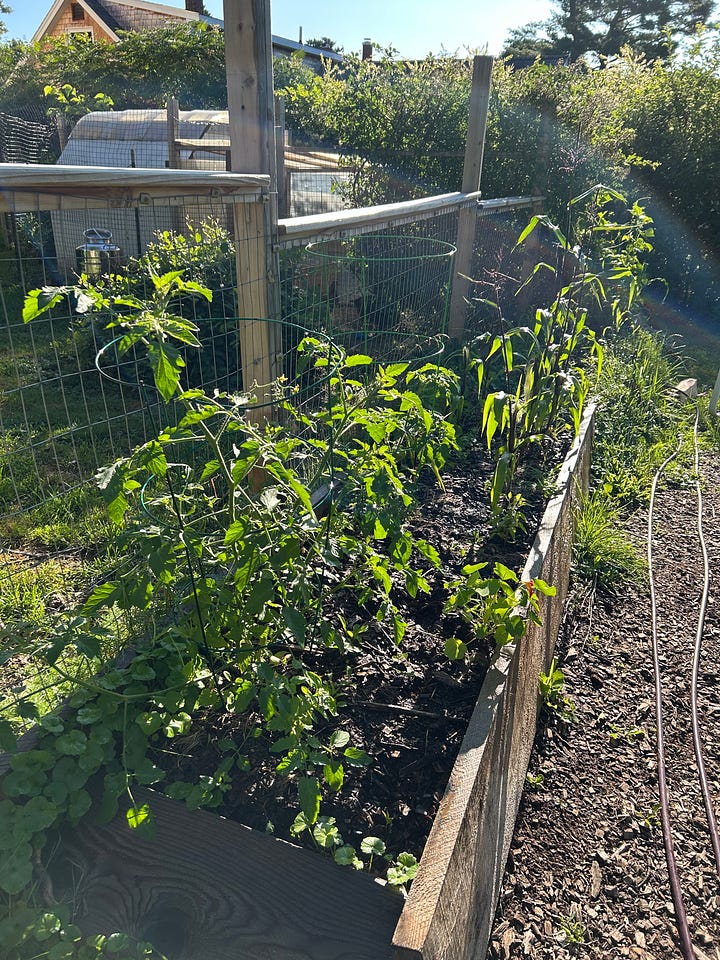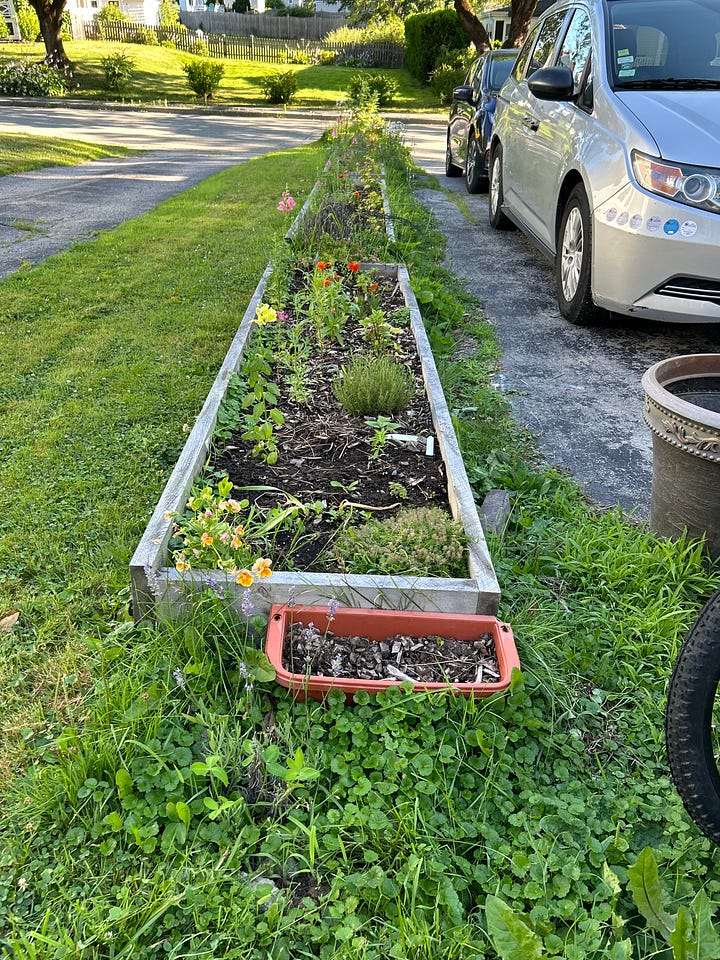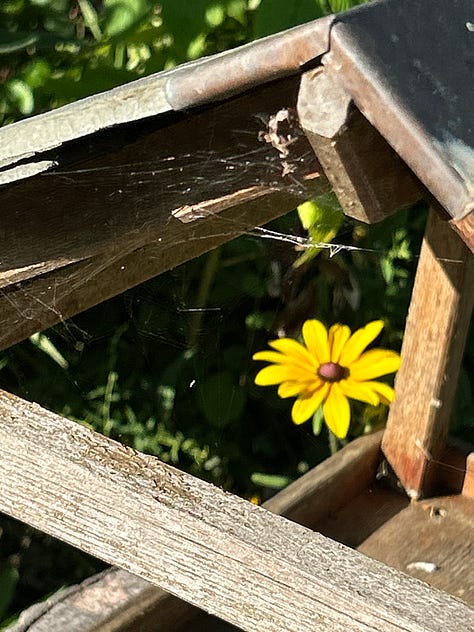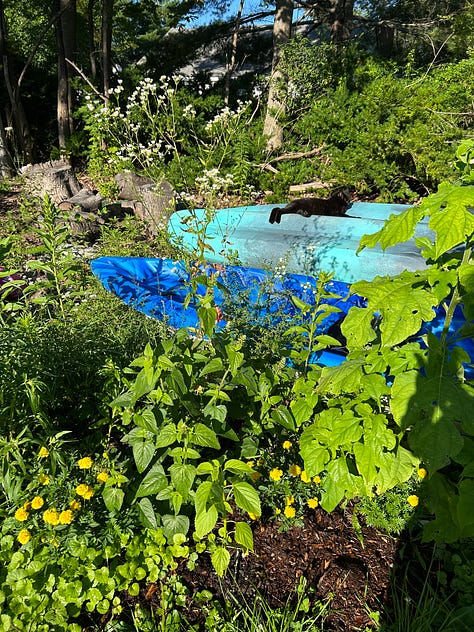Garden Check, July
My neighbor recently asked me about a gangly, bushy plant (some might call it a “weed”) growing between our driveways. She wanted to know what it was, and if I had a plan for it. Obviously she was not happy.
I explained that I was waiting to see what it would do, which was apparently not the answer she wanted to hear. I cut it down for the sake of cross-border harmony.
This is what happens when my gardening style is applied to liminal spaces such as this. When the “volunteers” pop up - unless they are obviously plants that I don’t want, or in direct competition with something I have planted - I will generally wait and see if they will “work”.
One of my favorites is fleabane, which are the little white flowers growing here, in front of one of the vegetable gardens:
In the dusk, they look like little white fireworks.
Here are the plants growing outside of the driveway flower boxes - including some lovely yarrow (which is five-times as bountiful as the yarrow that I planted inside the boxes…)
Here is the vegetable garden at the opposite end of where the fleabane is growing. It is doing all right - though I notice that some other vegetable gardens in the neighborhood are booming quite a bit more than this. Mine is still looking patchy:
Similarly, the long vegetable bed and the entire flower bed next to the driveway - more of a plants-and-dirt look than I would like:


The striking exception to this is the small flower garden that I planted six-weeks ago, its various plants growing large and luxurious, as exemplified by this tithonia (Mexican sunflower), already four-feet tall:
The garden’s secret? Brown gold! Pure dog poop, which aged for about two months, after having been collected from the dog yard in the winter (so not fully composted, in other words). I decided to experiment with it for the flowers (since we don’t eat them). I laid it down (smelly!), covered it with straw, then with a layer of burdock leaves, then planted into it - only touching the “brown gold” with the trowel when I dug into it to add some potting soil, then the seedlings. The process is explained in this article. Here is the little tithonia seedling (in the lower right) six weeks ago - the marigolds to the left of it are now shadowed beneath its lower leaves:
Here are some scenes around the yard:



And, this morning, the very first sweet pea flower, growing from the planting box on the porch:
I am hoping, over the next few weeks, to build a new and improved chicken coop. The girls are getting too good at eating their own eggs, and something really must be done.










